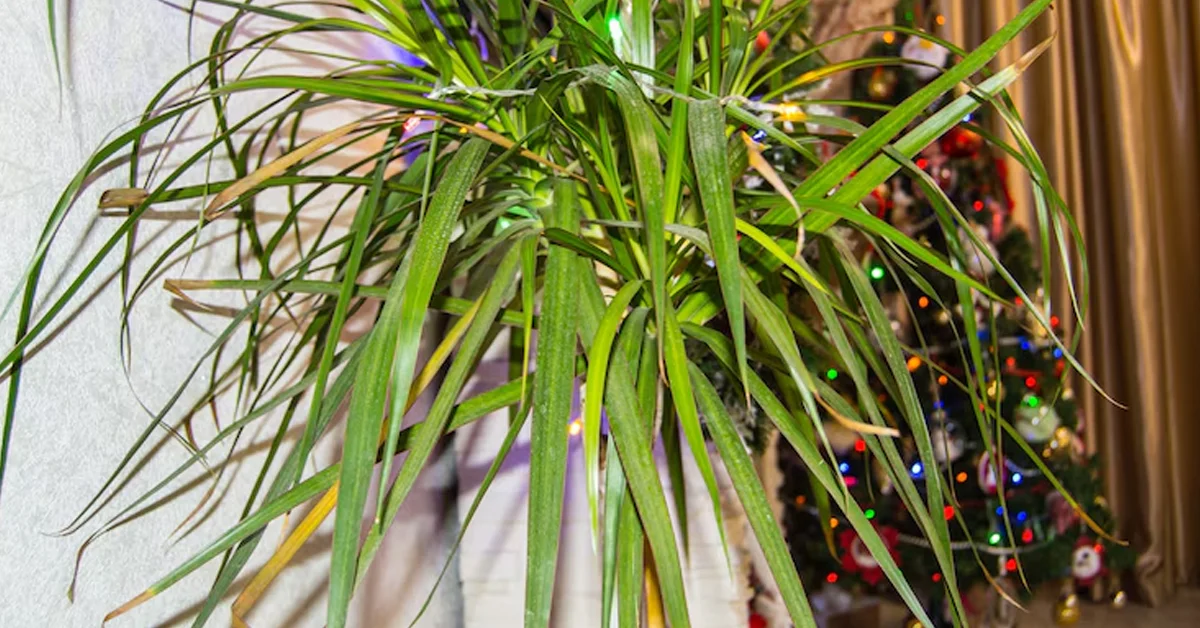Ficus Benjamina, commonly known as the weeping fig, is a popular indoor plant renowned for its attractive, glossy green leaves and graceful, weeping branches. This hardy plant can add a touch of elegance to any space, whether in a home or office. However, to keep your Ficus Benjamina healthy and thriving, you need to provide it with the right care. This guide will walk you through essential tips and expert advice on how to properly care for Ficus Benjamina’s to ensure vibrant growth and long-lasting beauty.
TRENDING
High-Quality 20×30 Building Kit – Ideal For Custom Structures
What Is Ficus Benjamina?
Ficus Benjamina’s also known as the weeping fig or Benjamin fig, is a species of fig tree native to Southeast Asia and Australia. It’s widely cultivated as a decorative houseplant due to its dense, attractive foliage and relatively easy care. In its natural habitat, Ficus Benjamina’s can grow into a large tree, but when grown indoors, it remains a manageable size. It has oval-shaped leaves that range from deep green to variegated shades and may have a slightly drooping appearance, hence the term “weeping” fig.
Although it’s a relatively low-maintenance plant, Ficus Benjamina’s can be sensitive to changes in its environment, so it’s important to understand its specific needs to keep it flourishing.
Light Requirements For Ficus Benjamina
One of the most important factors in caring for Ficus Benjamina’s is providing it with the right amount of light. This plant thrives in bright, indirect light but can adapt to lower light conditions as well. However, it should never be exposed to direct sunlight for long periods, as this can scorch its delicate leaves. Here’s what you need to know about light conditions:
Bright, Indirect Light
Ficus Benjamina’s thrives in bright, indirect light. Placing your plant near a window with sheer curtains is ideal. The plant will benefit from plenty of light but without the harshness of direct sunlight.
Avoid Direct Sunlight
While it enjoys light, direct sunlight can cause the leaves to burn, resulting in brown spots or crispy edges. If your Ficus is exposed to too much direct sun, consider moving it to a location with filtered light.
Adaptable to Low Light
Though not as ideal as bright, indirect light, Ficus Benjamina’s can tolerate low light conditions. However, growth may slow down, and the plant might lose some leaves if placed in a dim spot for too long.
Watering Your Ficus Benjamina
Proper watering is another key element in Ficus Benjamina care. Overwatering or underwatering can lead to stress and poor growth. Here are some watering guidelines to keep your Ficus thriving:
Water When the Top Layer of Soil is Dry
Ficus Benjamina’s prefers to dry out slightly between waterings. Stick your finger about 1-2 inches into the soil to check moisture levels. If the soil feels dry, it’s time to water. If it’s still moist, wait a few days before checking again.
Ensure Proper Drainage
It’s crucial to ensure that your Ficus Benjamina’s pot has good drainage. Standing water at the bottom of the pot can lead to root rot, so make sure that excess water can escape. A well-draining potting mix, combined with drainage holes in the pot, helps keep the roots healthy.
Water Evenly
When watering, ensure that the water is distributed evenly throughout the soil. Avoid soaking one side of the pot, as this can cause uneven moisture levels that may stress the plant.
Water Quality
Ficus Benjamina’s can be sensitive to the chemicals in tap water. If possible, use filtered or distilled water to avoid potential leaf damage. Alternatively, letting tap water sit for 24 hours before using it can help dissipate harmful chemicals like chlorine.
Humidity And Temperature Needs
Ficus Benjamina is native to tropical climates, which means it prefers warm temperatures and high humidity. To provide the best conditions for your plant, keep these factors in mind:
Ideal Temperature Range
The ideal temperature for Ficus Benjamina is between 60-75°F (15-24°C). It’s important to avoid sudden temperature changes or drafts, which can stress the plant and cause leaf drop.
Humidity Levels
Ficus Benjamina thrives in humid environments, but it can adapt to average indoor humidity. If the air in your home is very dry, especially during the winter, you may need to increase humidity around the plant. You can achieve this by misting the leaves occasionally or using a humidifier. Alternatively, placing the plant on a humidity tray filled with water and pebbles can help create a more humid microenvironment.
Avoid Cold Drafts
Ficus Benjamina is sensitive to cold drafts, so avoid placing it near windows or doors that open to the outside. Sudden cold exposure can lead to shock and leaf drop.
Fertilizing Ficus Benjamina
Like many houseplants, Ficus Benjamina benefits from regular feeding, especially during the growing season (spring and summer). Here’s how to fertilize your plant:
Use a Balanced Fertilizer
A balanced, water-soluble fertilizer with equal parts nitrogen, phosphorus, and potassium is ideal for Ficus Benjamina. Apply the fertilizer once a month during the active growing season (spring and summer) to promote healthy growth.
Reduce Fertilizing in Fall and Winter
In the fall and winter, the plant enters a dormant period, and growth slows down. Reduce fertilization during these months to avoid overfeeding.
Avoid Overfertilizing
Overfertilizing can lead to nutrient imbalances and cause the plant’s roots to burn. Always follow the instructions on the fertilizer packaging and avoid applying too much.
Pruning And Maintenance
Pruning your Ficus Benjamina helps keep it healthy, encourages new growth, and allows you to shape the plant. Here are some tips for maintaining your Ficus:
Prune Dead or Damaged Leaves
Regularly remove dead or yellowing leaves to maintain the plant’s appearance and health. This helps prevent the spread of disease and keeps the plant looking fresh.
Shape the Plant
Ficus Benjamina can be pruned to maintain a desired shape. You can trim back any leggy growth or remove branches that are growing too tall or wide. Use sharp, clean pruning shears to avoid damaging the plant.
Repotting
Ficus Benjamina doesn’t need frequent repotting, but every two to three years, you may need to move it to a larger pot to allow for continued root growth. Choose a pot that is 1-2 inches larger in diameter than the current one and make sure it has good drainage.
Leaf Care
To maintain the glossy appearance of the leaves, wipe them gently with a damp cloth to remove dust. This helps the plant absorb light more efficiently and keeps it looking vibrant.
Common Issues With Ficus Benjamina
Although Ficus Benjamina is generally hardy, it can experience a few common problems. Being aware of these issues will help you address them promptly:
Leaf Drop
One of the most common issues with Ficus Benjamina is leaf drop. This is often caused by stress, such as sudden changes in light, temperature, or humidity. If your plant is shedding leaves, check for drafts, changes in watering schedule, or too much direct sunlight.
Brown Tips or Edges
Brown tips or edges on the leaves may indicate low humidity or underwatering. Increase humidity or adjust your watering schedule to resolve this issue.
Pests
Ficus Benjamina can be susceptible to pests such as spider mites, scale, and mealybugs. Check your plant regularly for any signs of infestation, such as discolored or distorted leaves. If pests are present, treat the plant with insecticidal soap or a mixture of water and mild dish soap.
Conclusion
Caring for Ficus Benjamina may require some attention to detail, but with the right conditions, it can flourish and make a beautiful addition to your home. By providing it with bright, indirect light, consistent watering, and a humid environment, you’ll be well on your way to keeping your Ficus Benjamina healthy and vibrant. Regular pruning and occasional repotting will also ensure that your plant remains a striking centerpiece for years to come.
With these expert tips and a little patience, your Ficus Benjamina will thrive and provide you with stunning foliage and graceful branches that can brighten any room.
ALSO READ: Leigh-Anne Csuhany Today: Latest Updates And News
FAQs
What is Ficus Benjamina?
Ficus Benjamina, also known as the weeping fig, is a tropical plant native to Southeast Asia and Australia. It’s commonly grown indoors for its attractive foliage and graceful, weeping branches.
How often should I water my Ficus Benjamina?
Water your Ficus Benjamina when the top 1-2 inches of soil feel dry to the touch. Make sure not to overwater, as this can lead to root rot.
Can I keep my Ficus Benjamina in low light?
While Ficus Benjamina prefers bright, indirect light, it can tolerate lower light conditions. However, its growth may slow down, and the plant may drop some leaves in such environments.
Why are the leaves on my Ficus Benjamina turning yellow?
Yellowing leaves on a Ficus Benjamina are often a sign of overwatering, underwatering, or stress from changes in temperature, light, or humidity. Check the soil moisture and environmental conditions to address the issue.
How do I increase humidity for my Ficus Benjamina?
To increase humidity, you can mist the leaves regularly, use a humidifier, or place the plant on a humidity tray filled with water and pebbles.











